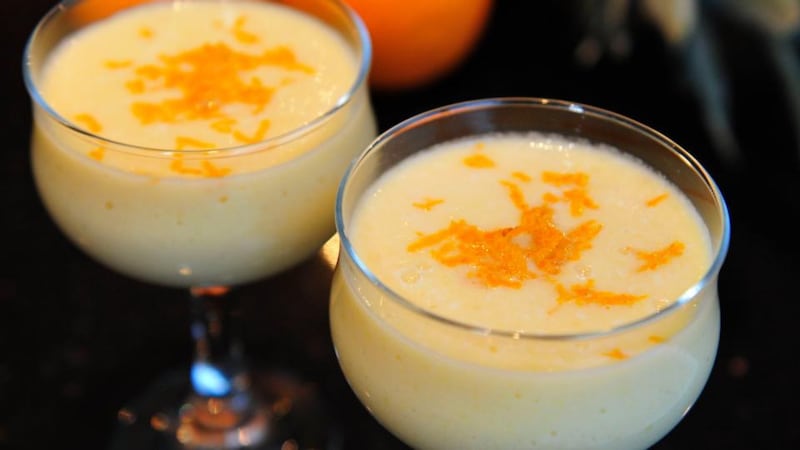You share your body with more than 100 trillion bacteria. That’s right. It’s thought that more than 1,000 different species are growing in the gut, and we know little or nothing about most of them.
This great ecosystem is called the microbiome or “ecological community of commensal, symbiotic and pathogenic microorganisms that literally share our body space”.
We live in a complex symbiotic relationship with some of these microbes. We provide them with indigestible carbohydrates and a space to flourish, and we benefit enormously in return.

These good bacteria, such as certain bifidobacterium and lactobacillus strains, provide our colonic epithelial cells with energy from the fermentation of our otherwise indigestible waste. They also provide us with biotin, vitamin B12 and vitamin K, although not in large enough quantities to meet our total requirements.
The good bacteria also act as a physical barrier and secrete antimicrobial proteins that prevent pathogenic bacteria from gaining the upper hand.
Immune system
A healthy digestive and immune system depends on us keeping the good bacteria thriving and outnumbering the not-so-good bacteria.
However, reduced levels of good bacteria can be caused by one or more of the following factors: stress, broad spectrum antibiotics, diarrhoea, ageing, active inflammatory conditions such as colitis or gastroenteritis, fasting, a poor fibre intake, and consuming contaminated food or water.
Optimum levels of good bacteria are essential to maintaining a healthy digestive and immune system. The following are the potential benefits:
Reduce the growth of harmful bacteria.
Reduce the risk or impact of diarrhoea.
Reduce the symptoms of irritable bowel syndrome.
Reduce lactose intolerance.
Help reduce the complications associated with ulcerative colitis.
Help reduce the risk of colon cancer.
Improve the symptoms of colic in infants.
Help reduce allergy conditions such as atopic dermatitis.
Help support the natural defences.
(Source: Irish Nutrition and Dietetic Institute factsheet: indi.ie)
Good bacteria in food
When we talk about good bacteria in foods, we generally refer to them as probiotics, or friendly bacteria. The word probiotic is derived from the Greek word for “pro-life” as opposed to antibiotic or “against life”.
According to the United Nations Food and Agriculture Organisation and the World Health Organisation, probiotics are live microorganisms which, when administered in adequate quantities, confer a health benefit on the host.
Probiotics can be found in some live yoghurts, fermented milk drinks and other dairy produce. Different products contain different species of live bacteria, so they are not all the same and don’t all have the same effects.
With the tightening of nutrition and health labelling legislation, many product packs are changing, and companies are under pressure to substantiate their claims.
The potential of probiotic food products is enormous as diet is considered to have a critical impact on the microbiome.
Research into their use in food and tablet form is growing. Certain probiotics are being used to treat irritable bowel syndrome. Some help prevent lactose intolerance. It’s unclear whether the presence of specific bacteria is a contributor to obesity or is a consequence of obesity, but there is compelling evidence to suggest a strong association.
Scientists have also known for some time that the brain sends signals to the gut, which is why stress and other emotions can cause gut symptoms such as pain or butterflies in your tummy.
A recent study from the University of California shows that signals also travel in the other direction. Up until last May, this two-way gut-brain communication had been suspected and seen in animal studies only. The potential for probiotic foods to impact on mental health is another thriving area of research.
Food for the gut bacteria
Certain foods naturally help our good bacteria to thrive in the gut. These are called prebiotics and include foods such as bananas, oats, wholegrains, onions, garlic, leeks, artichokes and soybeans.
Prebiotic ingredients such as inulin (from chicory) are now being added to yoghurts. This results in a symbiotic product. The food promoter for the good bacteria and the specific strain of probiotic are consumed together.
While the research to date is fascinating, we need more research to ensure specific strains are effective and safe, especially for vulnerable groups such as children, pregnant women and people with compromised immune systems.
Always speak to your doctor or dietitian before taking any new supplement. If you are considering trying probiotics, choose products from well-known companies, especially those that have been tested in research studies.
Reliable products should say the name of the exact probiotics they contain, as well as how many live organisms a single dose provides.
These two recipes can help boost your daily probiotic intake in a tasty way.
Creamy guacamole
Serves 5
2 large, ripe avocados, roughly mashed
1 large tomato, seeds removed and flesh finely chopped
½ red onion, finely chopped
125g pot of low-fat probiotic natural yoghurt
1 tbsp coriander, chopped
Juice of 1 lime
To serve: 5 flour tortilla wraps, cut into triangles (excluded in nutritional analysis).
Preheat the oven to 180 degrees if serving with the tortilla wraps. Spray the tortilla triangles with cooking spray. Place on a baking sheet in the preheated oven for 5-10 minutes, or until crisp.
Meanwhile, combine all the ingredients for the guacamole in a bowl. Serve with tortilla triangles. This would work equally well with crudités.
Exotic pineapple, orange and honey extravaganza
Serves 3
150ml low-fat milk
Half a fresh pineapple, peeled and diced
250g low-fat probiotic natural yoghurt
50g honey
50ml freshly squeezed orange juice
The zest of one orange
Whizz all the ingredients together and serve cold in tall glasses.
Paula Mee is lead dietitian at Medfit and a member of the Irish Nutrition and Dietetic Institute. Email info@medfit.ie.


















